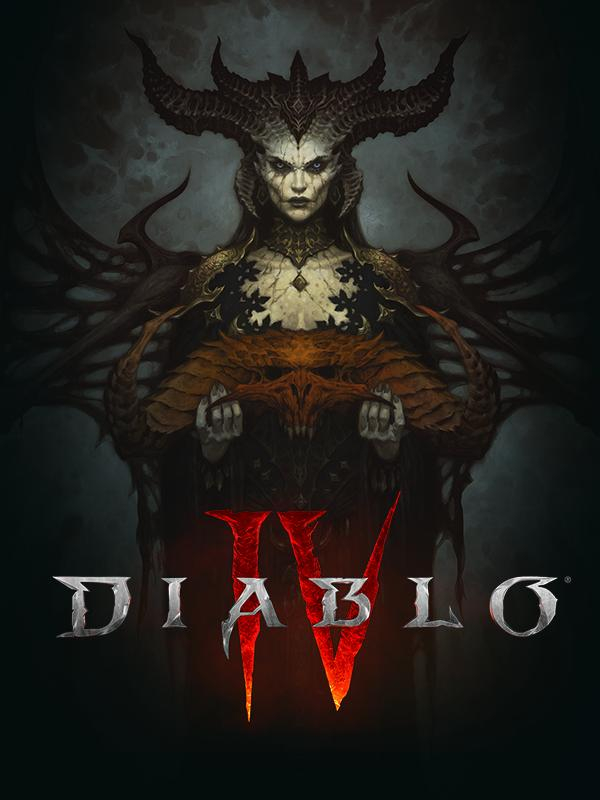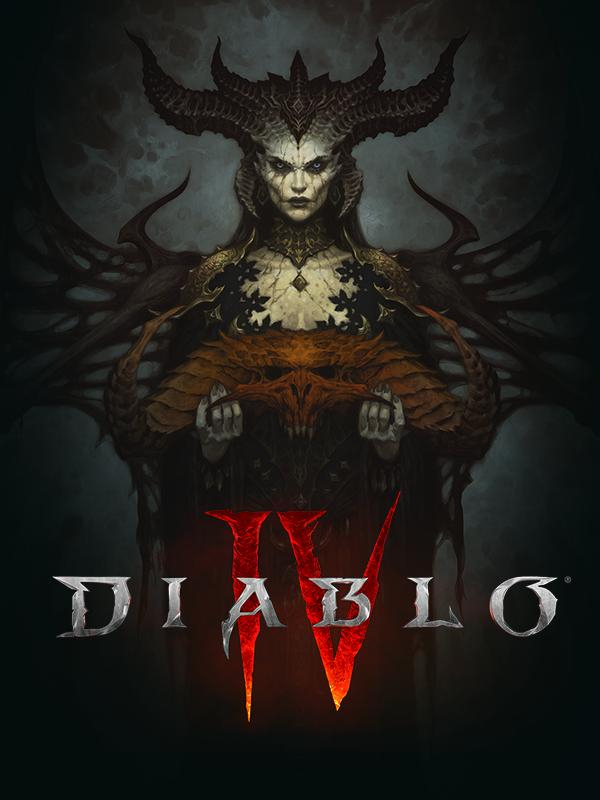Blizzard’s gripping ARPG loot fest plunges into epic and dark territory convincingly with Diablo IV. On the one hand, the game brings a more streamlined, user-friendly experience akin to its predecessor. However, this is infused with the grittier realism and darker themes of the fan-favorite Diablo II. And the appealing formula is expanded upon with more organic, open-world locales as well as dynamic progression. Yes, instead of the (relatively) more colorful, WarCraft-y vibe of the third Diablo, this entry fully embraces the macabre and features countless sinister, decaying hellscapes. This is topped off with a memorable villain, the ambitious demon queen Lilith. For better or for worse (usually the former), Diablo IV is emphatically crafted with a modern polish — regarding its cinematic presentation and nuanced mechanics — while drawing more from its charming roots.
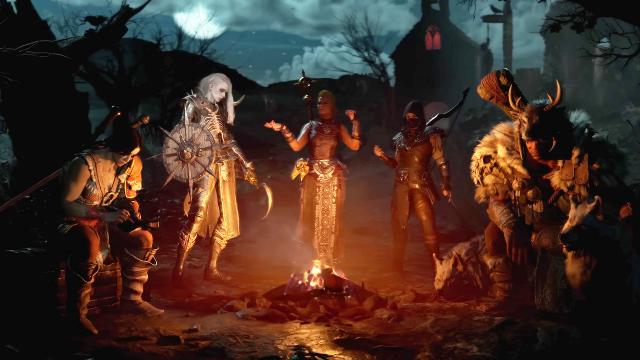
Players are shown a great level of detail and craftsmanship from the outset, as they’re given a multi-layered player creation tool and dropped into a snowy, atmospheric mountain landscape. The game brings a handful of classes to choose from, each with their own strengths, mechanics, and abilities. These include the offensively-minded Barbarian, shapeshifting Druid, swift Rogue, and spell-casting Sorcerer. But as one who likes fighting with familiars to ease some of the heat, I first opted for the Necromancer. This popular Diablo II Class this time returns right at launch, and in enticing form. They wield a diverse palette of dark magic and debuffs, but their real allure is that they can raise the dead to fight for them. This sets the stage for some thrilling skirmishes as their band of skellies and skeletal mages pile on the damage.
Players are encouraged to experiment with different abilities and fighting styles until settling into one that works for them. By way of the solidly-designed skill tree and inventory screens, this can (and should) be expanded upon, altered, and sometimes completely changed depending on which among the diverse group of demons, animals, and other creatures are being fought. For instance, during most of my long journey I enjoyed raising some hell (so to speak) with my small army of the dead and just letting them do a lot of the work, while I inflicted added damage and debuffs from the sidelines.
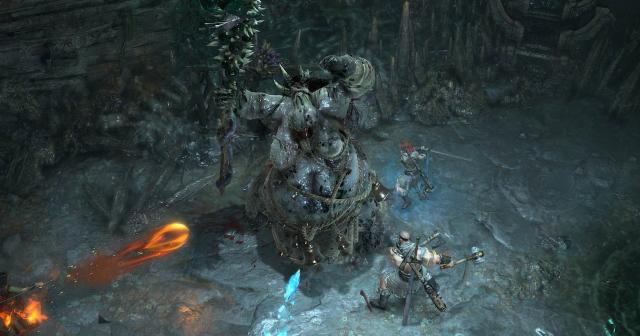
My Necro would overwhelm baddies and generally excelled in crowd control. I’d supplement this with a few abilities nicely organized and affixed to my hotbar. I would utilize a sort of one-two punch of entrapping enemies with the Bone Prison skill and follow this up with Iron Maiden, which debuffs and inflicts damage to all in the enclosed area. The debuffs to those in the circle would be triggered by them attacking my skelly minions (which they inevitably did quite a bit). Meanwhile, I would stand from a safe distance and spam Bone Splinter projectiles, before swooping in for the finish with weapon strikes up close. Tinkering with different fighting styles and combos like this proved quite rewarding when finally stumbling upon great ways to wipe out the onslaught of tough foes.
Still, Diablo IV thrives in its situational combat, and this set-up didn’t always work too well on some beefier elite foes and bosses. But thanks to the versatility of customization and a handy respec feature (which can unfortunately add up in cost when deep into the skill tree), I was able to adjust and tweak certain things on the fly, improving my build. An example is that I initially stressed the amusing but not terribly practical Corpse Explosion skill for an early-game boss — bringing many frustrating deaths. I had, after all, opted for the Veteran difficulty (available from the get-go), which demands some skill and pre-planning. But after some tinkering and respecing, I shifted my focus on powering the skellies more, and handily defeated said boss.
This subtle level of detail and strategy impressed me, and caught me a bit off-guard as a more causal Diablo player (though in fairness I have played Diablo III to death). The more you customize your class and fight increasingly potent baddies, the more this depth comes to light amidst the hacking, slashing, and spell-casting that makes up so much of this grindy journey. Of course, some parts can be powered through by spamming your attack and using a few spells/skills (when keeping up with basic upgrades). However, it’s easy to get blindsided by a stronger foe, which can end you before you even think to use a potion, so it's important to be in fighting shape at all times.
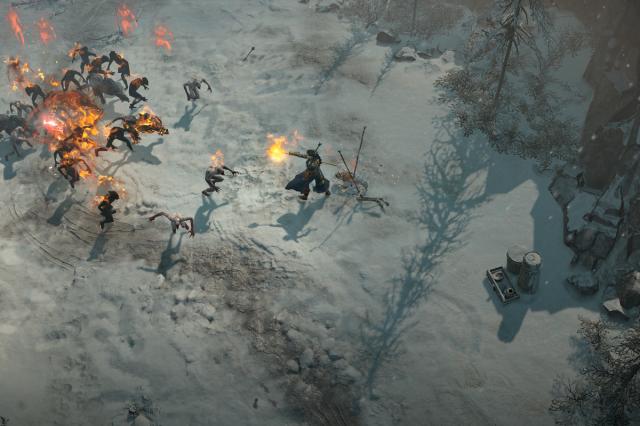
Speaking of which, I did notice a major difficulty spike when clashing with bosses and even some elites, to the point where it could be jarring. You'll often get wiped out if you have no strategy, don’t respond to their behaviors, or come in with a battle plan. The erratic nature of the difficulty can get a tad frustrating, though it adds to the intensity and compels you to keep improving - and there's no shortage of opportunities to do that.
Beyond the tactical aspects, the game rewards ample combat and plundering by granting tons of loot, which is as satisfying as ever to sift through and tinker with. Naturally, players will want to seek out rare/legendary items and equipment that boosts stats and tacks on buffs or abilities. However, there’s a hidden extra layer of nuance here too. Certain item/equipment perks will better complement certain classes and builds, so you won’t always just want to jump on loot with the beefiest raw stats. Then there are the added factors of gem insertions, upgrades, and passive gear boosts called Aspects. The impact of these enhancements and customizations becomes more apparent deeper in your run as you gain more loot, complete quests, and explore new regions in the vast, demon-plagued Sanctuary.
This great attention to detail certainly extends to the game’s presentation and level design. Players will find an endless slew of enemies to slay — from spell-casting Ghouls to ravenous bears — as well as unique quests/events given by NPCs. The campaign brings a virtually seamless, non-linear, open-world structure this time around, with the only real restrictions being the overpowered foes in more distant lands. As a side note, these will scale to your level once you’ve beaten the campaign, ensuring your journey remains intense even as you hit the 100-level cap. While quests within acts are linear, players can often jump around between a number of quests in-between some of the six acts. This can be useful when stuck on a particularly brutal boss, as I have been (looking at you, Lilith's Lament).
While most of this enjoyable experience stems from slaying enemies and getting the sweet loot they cough up, just traversing the distinct-yet-intertwined Sanctuary biomes proves gripping by itself. Blizzard clearly aims to tap into the dilapidated, gloomier (almost to a fault) vibe of Diablo II with its overworld and dungeon hellscapes. While I appreciated this darker tone, the campaign could have done with a bit more color and life early on, which then could have gotten darker and more hellish as you progressed. This could have brought a sense of tension and escalation and yielded a more compelling narrative.
As it stands, the experience yielded feelings of mundane repetition at times, as I traversed yet another gloomy landscape, aided another fallen soldier to find a loved one, or headed to another place the demon Lilith was seen scheming. The narrative does get off on the right foot, to be sure. (SPOILER WARNING) You’re shown being hoodwinked by conspiring townspeople you’re partying with; you’re suddenly betrayed, drugged, and find you’re about to be sacrificed to Lilith as you awaken. But as a whole, much of the story feels stock and straightforward in comparison. It doesn’t quite live up to the expectations of that subversive early-game plot device.
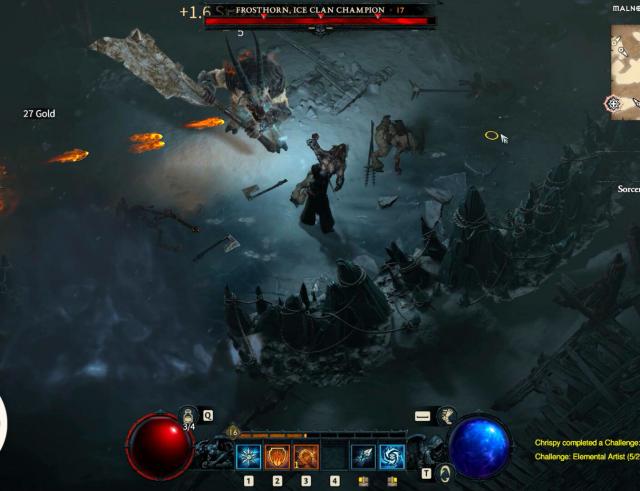
Still, as a horror and heavy metal fan, I did enjoy the dynamic and dark art design, which is dripping with occult themes, Gothic imagery, and deep eerie settings. Some excellent voice acting and rich sound design also fill in needed detail where the storytelling and lore are somewhat lacking. And while Lilith makes for a pretty cool, sadistic villain as a whole, it doesn’t feel like she was too well utilized with regard to the plot.
Unfortunately, I was also taken out of the alluring atmosphere a number of times, thanks to the game being tethered to online-only servers. While my gaming PC is quite capable of handling Diablo IV, online issues such as spotty latency (which I was mostly able to tighten up) hindered the experience at times. In a few cases, I found myself waiting in the queue of the packed server for several minutes, only to back out and quickly relaunch the game with no issues (huh?). Recently, I jumped into a very choppy, sluggish game that was near unplayable thanks to an apparent DDoS breach. This online system also means pausing is not an option, aside from scurrying to a safe place and busting out the Town Portal, which (after some seconds) warps you to the nearest safe town hub. This unpredictable, cumbersome system tends to clash with Diablo IV’s plethora of quick, action-based dungeon-crawling.
The positive flipside of this integrated online system is that co-op is as seamless as ever, and greatly adds to the fun, rewarding gameplay. I was able to tackle some bosses and tougher baddies with the help of other players, as well as take care of a few backlogged side quests with more efficiency. It also helps that the game scales to (or near) the level of each player, having them take damage and gain loot appropriate for their level. It’s a great way to incentivize co-op, and it means you don’t have to worry about getting steamrolled when tackling a later quest of a high-level player. The online integration injects much replayability and depth, enticing you to fight on long after wrapping up the campaign.
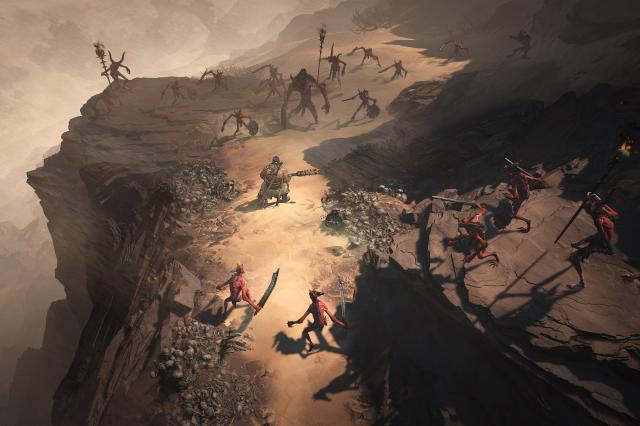
The abundance of trickier end-game content is especially multiplayer-friendly. Players will be compelled to match up with others roaming Sanctuary in real-time with features like Helltide events, which play like a chaotic, blood-soaked survival mode. Then there are the modified Nightmare Dungeons and the Torment difficulty tier, which demand military precision and powerful builds. When it’s running as it’s supposed to, at least, Diablo IV’s quasi-MMO style is fun and intuitive, unleashing a near-endless flow of dynamic, rewarding gameplay.
While this is true for most major releases these days, Diablo IV is set to be a highly fluid experience with a bounty of added content on the way. These add-ons will come by way of new (semi-yearly) seasons and added content/cosmetics through purchasable passes. Long after players have explored the depths of Sanctuary and tried out all five classes, they can still take on new timed events and challenges, gather new, rarer loot, and (likely) QoL refinements, just as Diablo III received. As it stands, I was mostly enthralled exploring Sanctuary, dungeon-crawling, and wreaking havoc. However, the experience was marred by some spotty online issues, bouts of repetition, and uninspired lore. It’s hard to say where this sinister story ends, but it definitely comes out of the gates (of hell) swinging.
This review is based on a digital copy of Diablo IV for the PC
Read more about our Review Methodology here



